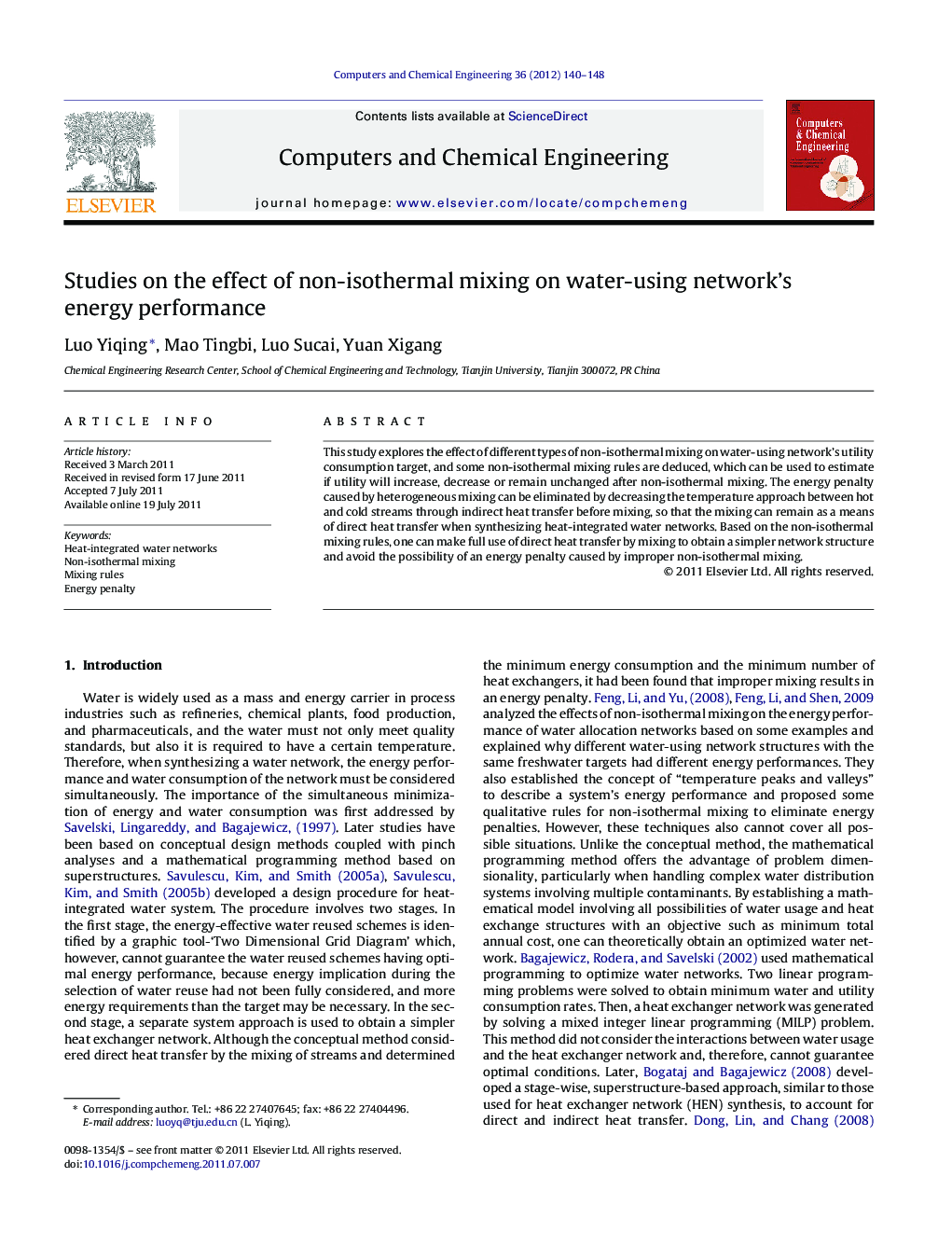| Article ID | Journal | Published Year | Pages | File Type |
|---|---|---|---|---|
| 172931 | Computers & Chemical Engineering | 2012 | 9 Pages |
This study explores the effect of different types of non-isothermal mixing on water-using network's utility consumption target, and some non-isothermal mixing rules are deduced, which can be used to estimate if utility will increase, decrease or remain unchanged after non-isothermal mixing. The energy penalty caused by heterogeneous mixing can be eliminated by decreasing the temperature approach between hot and cold streams through indirect heat transfer before mixing, so that the mixing can remain as a means of direct heat transfer when synthesizing heat-integrated water networks. Based on the non-isothermal mixing rules, one can make full use of direct heat transfer by mixing to obtain a simpler network structure and avoid the possibility of an energy penalty caused by improper non-isothermal mixing.
► This study explores the effect of different types of non-isothermal mixing on water-using network's utility consumption target. ► Some non-isothermal mixing rules are deduced, which can be used to identify whether non-isothermal mixing is beneficial to the system utility consumption. ► The energy penalty caused by heterogeneous mixing can be eliminated by decreasing the temperature approach between hot and cold streams using these rules. ► Based on the non-isothermal mixing rules, one can make full use of direct heat transfer by mixing to obtain a simpler network structure and avoid the possibility of an energy penalty caused by improper non-isothermal mixing.
